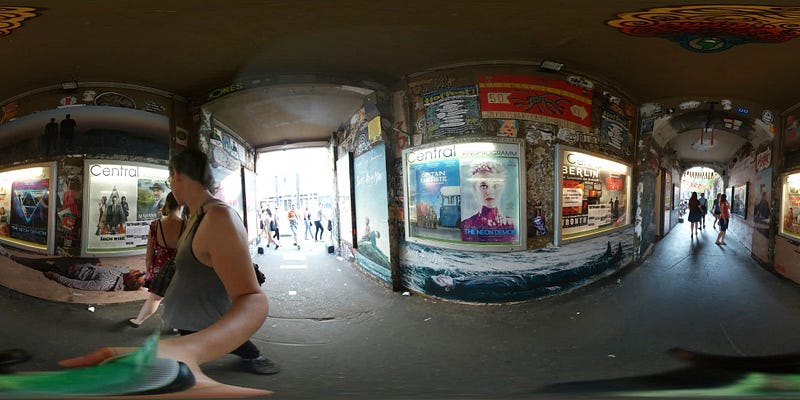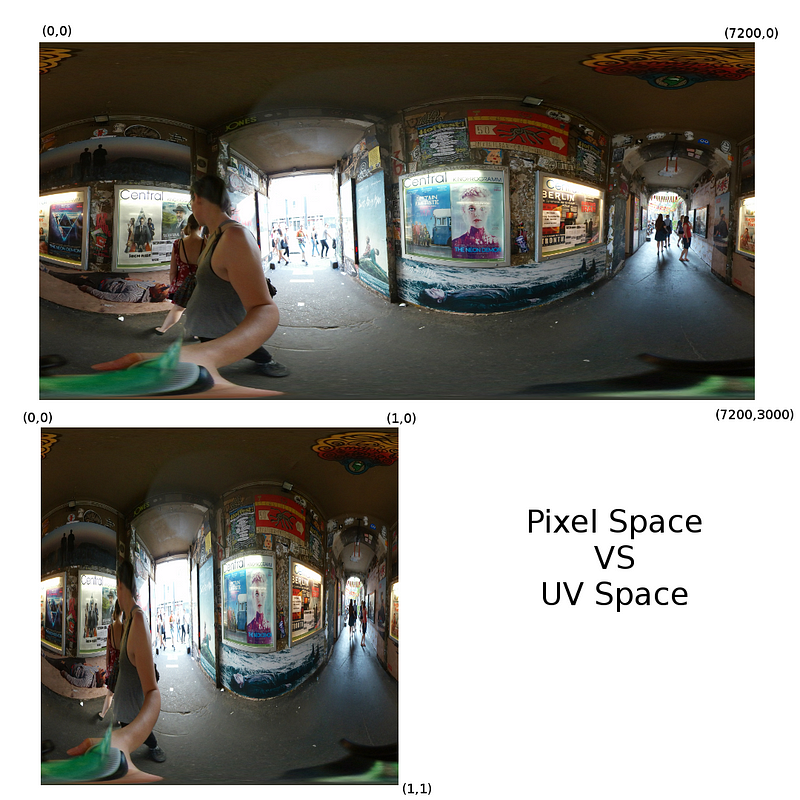Optimising A-Frame Assets for Faster Starts
tl;dr Check out the imageOptim web service for providing images Which download faster and are optimised for WebGL. The apis for this are detailed below.
Demo: https://jsbin.com/fugatar/edit?html,output

Image optimised by the Image optimisation service
On the web users are impatient, they will leave a mobile site if it does not load in only a few seconds. It is important to decrease the download size of assets so that pages load quickly. This applies just as much if your scene is a VR scene in A-Frame.
Optimising Images for A-Frame Textures
Here I am going to focus on image assets. Image Assets for textures can be both very large but also offer the greatest chance for improvement.
By providing assets which are optimised for the web you can greatly decrease the time to download the asset. There are tools such as imageOptim for greatly decreasing the byte size of the image whilst preserving much of the quality.
Another optimisation is providing correctly sized assets.
One requirement of WebGL assets is that their dimensions are a power of two. (256, 512, 1024, 2048, 4096, etc…) pixels per edge. THREE.js, and A-Frame by extension, will handle this for you by using the next power of two size up but it is not optimal.

Warning when image size is not a power of two.
In the case above my image was almost doubled in memory size (1.86x) but no extra information was added. By having images correctly sized from the start they can optimally be used in memory.
It may seem difficult to always produce assets at particular sizes and maintaining appearance but fortunately preserving the aspect ratio for images in 3D scenes is not a priority. This is because the graphics cards treat all images as if they were a 1x1 unit square it ignores the aspect ratio of the image.

Two Images, the top is how the image is used in the browser. The bottom is it represented in UV space where aspect ratio is discarded.
Automating this on the fly with ImageOptim Service
Fortunately Kornel Lesinski’s amazing imageOptim service takes care of both ensuring images are power of two and optimising filesize/quality.
Kornel is a genius when it comes to image optimisation and his tools and service have the best quality/size I have seen.
Here is an example of using the image service to pull in an optimised asset with the correct size.
BEFORE:
https://cdn.rawgit.com/AdaRoseEdwards/adaroseedwards.github.io/master/images/SAM_100_0122.jpg
6.44MB 7200x3600
AFTER:
https://img.gs/bbdkhfbzkk/4096x2048,stretch/https://cdn.rawgit.com/AdaRoseEdwards/adaroseedwards.github.io/master/images/SAM_100_0122.jpg
0.77MB 4096x2048
Demo (https://jsbin.com/fugatar/edit?html,output)
This greatly improves the loading time of the scene!!
API Details
https://img.gs/[api-key]/[options]/[url]
API keys are currently free so you can get one from the imageOptim website
I have used here: ‘4096x2048’ to fix the aspect to the nearest lower power of two. i.e. 7200x3600 => 4096x2048
I used ‘stretch’ because by default the image service will try to maintain aspect ratio and we want to force it to have a power of two dimension on each side.
Textures that are visible from close distance (or used for precise things like height maps) may need quality=high to preserve fine details; at the expense of a larger file size.
The image service also adds CORS headers so that you can use them in WebGL. It is easy to use just add https://img.gs/[your api key]/[options]/before the URL and add ‘crossorigin=anonymous’ as a html attribute. E.g.
)
Further Reading: Optimising Geometry Data
Sometimes that model you really want is very large Terence Eden has written article on optimising very fine Geometry and shows how to reduce a statue from 230MB to 1MB!
https://shkspr.mobi/blog/2016/08/reducing-the-filesize-of-complex-3d-obj-models/
Thanks
Thank you Kornel for adding the CORS headers and the ‘stretch’ option to your image service it will make scenes so much faster to load!
Thank you peter for reviewing.
Tagged in JavaScript, Web Development, A Frame, VR, Samsung Gear Vr
